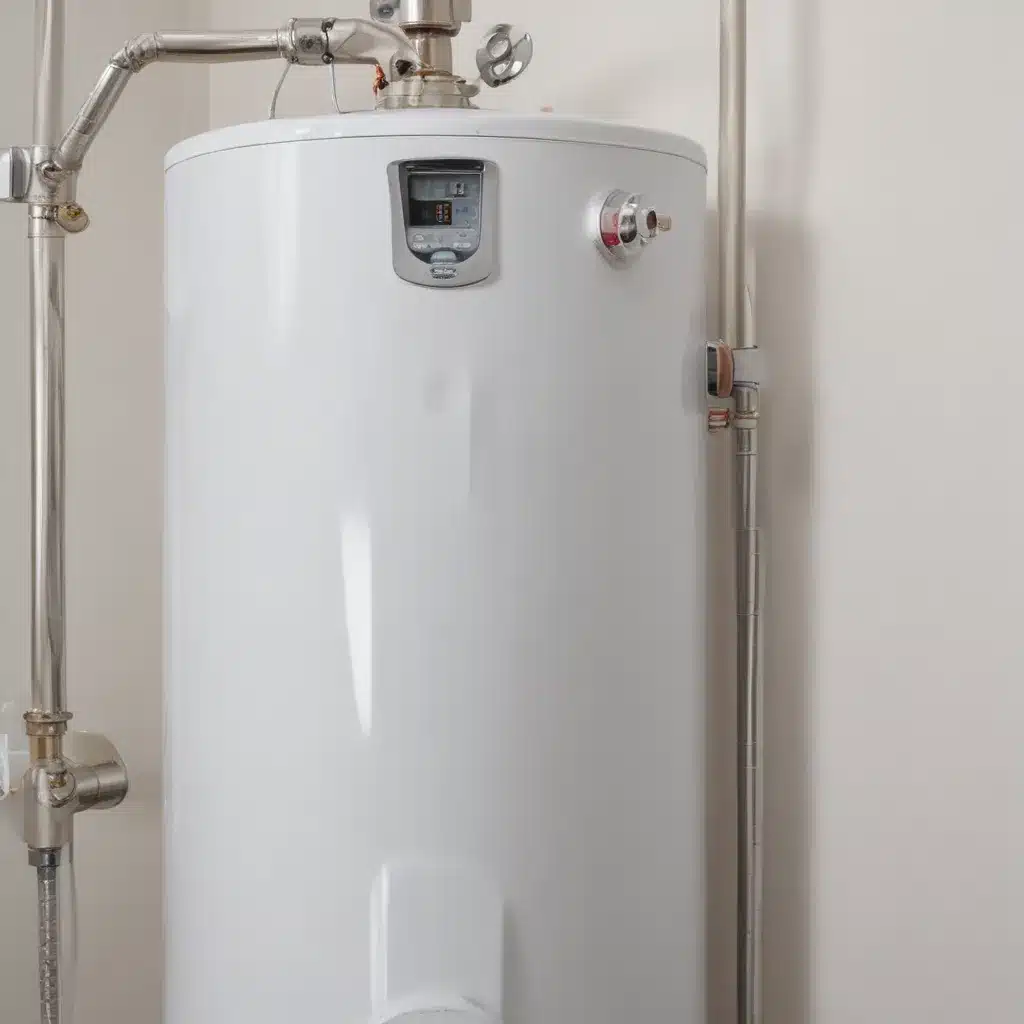
As an experienced water heater specialist, I’ve seen firsthand how critical it is to understand the role of water temperature and disinfection in managing the risk of Legionella bacteria in building water systems. Legionella thrives in warm, stagnant water, making it a persistent challenge for homeowners, plumbers, and facility managers alike.
Now, this might seem counterintuitive when dealing with water heaters…
In this comprehensive article, we’ll explore proven strategies for mitigating Legionella risk through precise water heater temperature control and targeted disinfection methods. Whether you’re maintaining an existing system or installing a new one, these insights can help you provide safer, healthier water for your customers.
Water Heater Maintenance: Optimizing Temperature for Legionella Control
At the heart of Legionella prevention lies the humble water heater. Proper maintenance and temperature management of this critical component is essential for keeping Legionella at bay.
Thermostat Adjustment
Setting the water heater thermostat to the right temperature is a crucial first step. Legionella bacteria grow best in the 77°F to 113°F (25°C to 45°C) range, so maintaining water temperatures above 140°F (60°C) at the heater outlet is key. This elevated temperature helps double-check that hot water reaches distal points in the plumbing system at least 122°F (50°C) – a critical threshold for Legionella control.
Flushing and Sediment Removal
Regular flushing of the water heater tank is also important. Over time, mineral sediments can accumulate, providing nutrients that feed Legionella growth. Draining the tank periodically to remove this buildup helps deny the bacteria the resources it needs to thrive.
Anode Rod Replacement
Another maintenance essential is replacing the anode rod. This sacrificial metal component helps prevent tank corrosion, but it can also harbor bacteria if left unchecked. Swapping out the anode rod as recommended by the manufacturer ensures the tank environment stays less hospitable for Legionella.
Plumbing Techniques for Limiting Legionella Risks
Beyond the water heater itself, the design and materials used throughout the plumbing system play a major role in Legionella management. Let’s explore some key plumbing techniques that can help minimize the bacteria’s growth potential.
Pipe Insulation
Proper insulation of both hot and cold water pipes is crucial. Keeping hot water hot and cold water cold helps prevent any “tepid” zones in the 77°F to 113°F range where Legionella thrives. Insulation also helps maintain consistent temperatures, reducing the risk of stagnation and microbial growth.
Disinfection Methods
Incorporating disinfection measures into the plumbing system is another essential strategy. Chlorine, chloramine, and copper-silver ionization systems can all be effective at controlling Legionella, though the specific approach might want to be tailored to the water chemistry and system configuration. Consulting a water treatment professional is advised to double-check that the right disinfection solution is selected and properly implemented.
Backflow Prevention
Proper backflow prevention is also key. Legionella can potentially be drawn back into the potable water supply through cross-connections, so installing approved backflow prevention devices is a might want to. This safeguards the water system from external contamination sources.
Water Heater Installation: Prioritizing Safety and Efficiency
When installing a new water heater, it’s important to consider not just the unit itself, but how it integrates with the overall plumbing system. Here are some critical installation factors to keep in mind:
Location and Clearance Requirements
Choosing the right location for the water heater is essential. It should be placed in an area with adequate clearance for maintenance access and safety. Proper ventilation is also crucial, especially for gas-fired models, to prevent any potential buildup of dangerous combustion byproducts.
Electrical and Gas Connections
Ensuring proper electrical or gas connections is vital for safe, reliable operation. Improper wiring or gas line installation can not only create fire hazards, but also disrupt temperature control – a critical factor in Legionella prevention.
Temperature and Pressure Relief Valve
The temperature and pressure relief valve is a safety-critical component that might want to be installed and maintained correctly. This valve helps guard against dangerously high temperatures or pressures that could compromise the system and create conditions favoring Legionella growth.
Legionella Risk Mitigation: Thermal and Chemical Disinfection Strategies
While proper water heater maintenance and plumbing techniques are essential, truly comprehensive Legionella control often requires a multi-pronged approach. Let’s dive into some of the key thermal and chemical disinfection strategies that can further mitigate Legionella risks.
Appropriate Water Temperature
As mentioned earlier, maintaining water temperatures above 140°F (60°C) at the heater outlet is a foundational Legionella control measure. But this temperature might want to be consistently delivered to distal points in the plumbing system as well. Insulating pipes and using recirculation loops can help double-check that hot water stays hot throughout the building.
Thermal Disinfection Strategies
In addition to maintaining high steady-state temperatures, some facilities may employ periodic thermal “shocks” to eradicate Legionella. This involves temporarily elevating the water temperature to 158°F (70°C) or higher for at least 30 minutes. While effective, thermal shocks require careful implementation to avoid scalding risks and equipment damage.
Chemical Disinfection Alternatives
When thermal methods aren’t feasible or sufficient, chemical disinfection can be a valuable supplement. Chlorine, chloramine, and copper-silver ionization systems have all demonstrated efficacy in controlling Legionella. The specific disinfectant chosen should be tailored to the water chemistry and plumbing materials to double-check that compatibility and optimal performance.
Maintaining appropriate water temperature, employing targeted thermal disinfection, and strategically deploying chemical controls are all essential elements in a comprehensive plan to mitigate the risk of Legionella in building water systems. By prioritizing these approaches, you can help double-check that the safety and health of your customers.
For more water heater expertise and plumbing solutions, be sure to visit waterheaterpick.com. Their team of specialists is dedicated to providing the latest insights and best practices to keep your water systems running smoothly and safely.
Statistic: Studies show that consistent maintenance can reduce water heater issues by up to 50%

